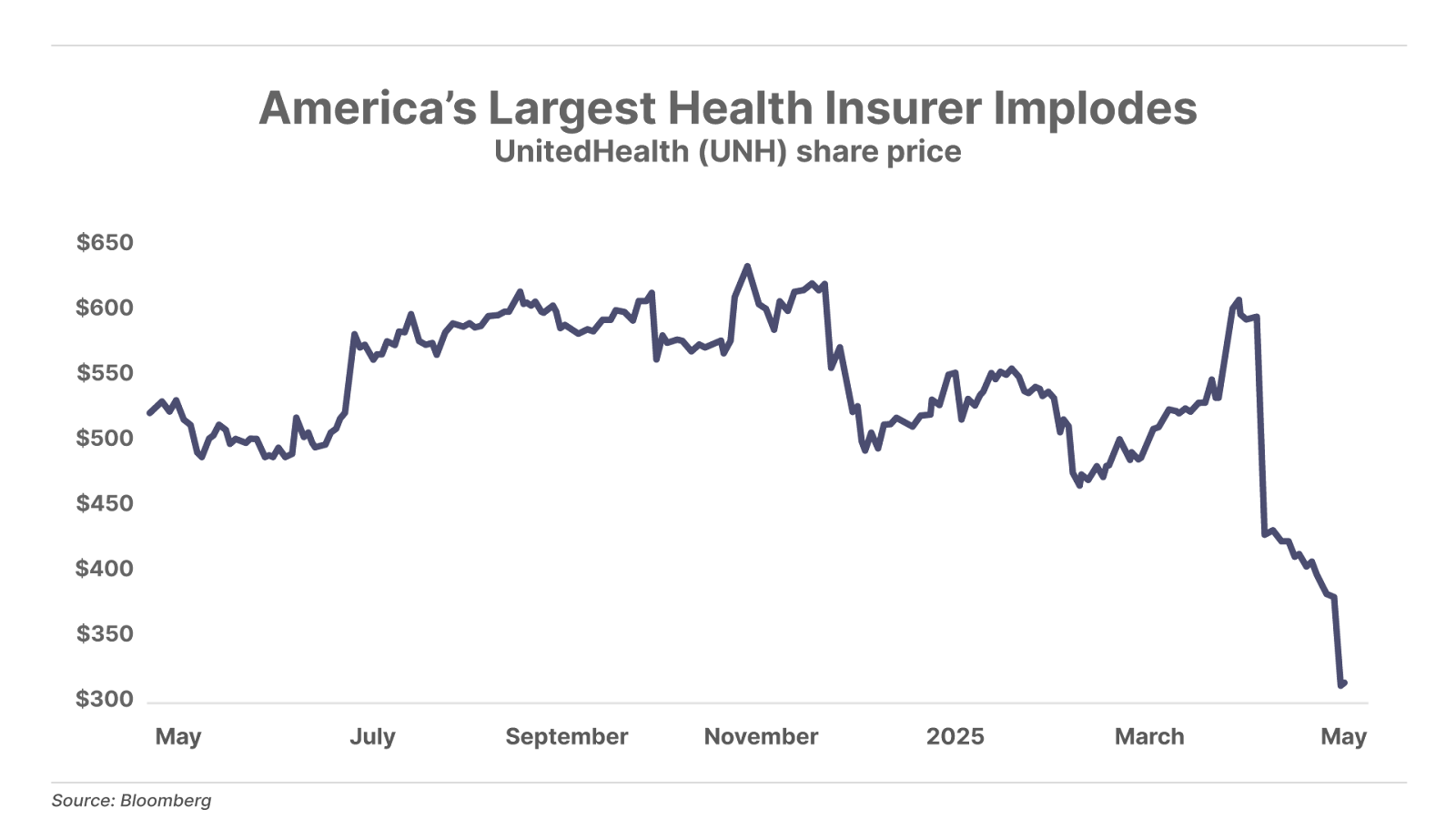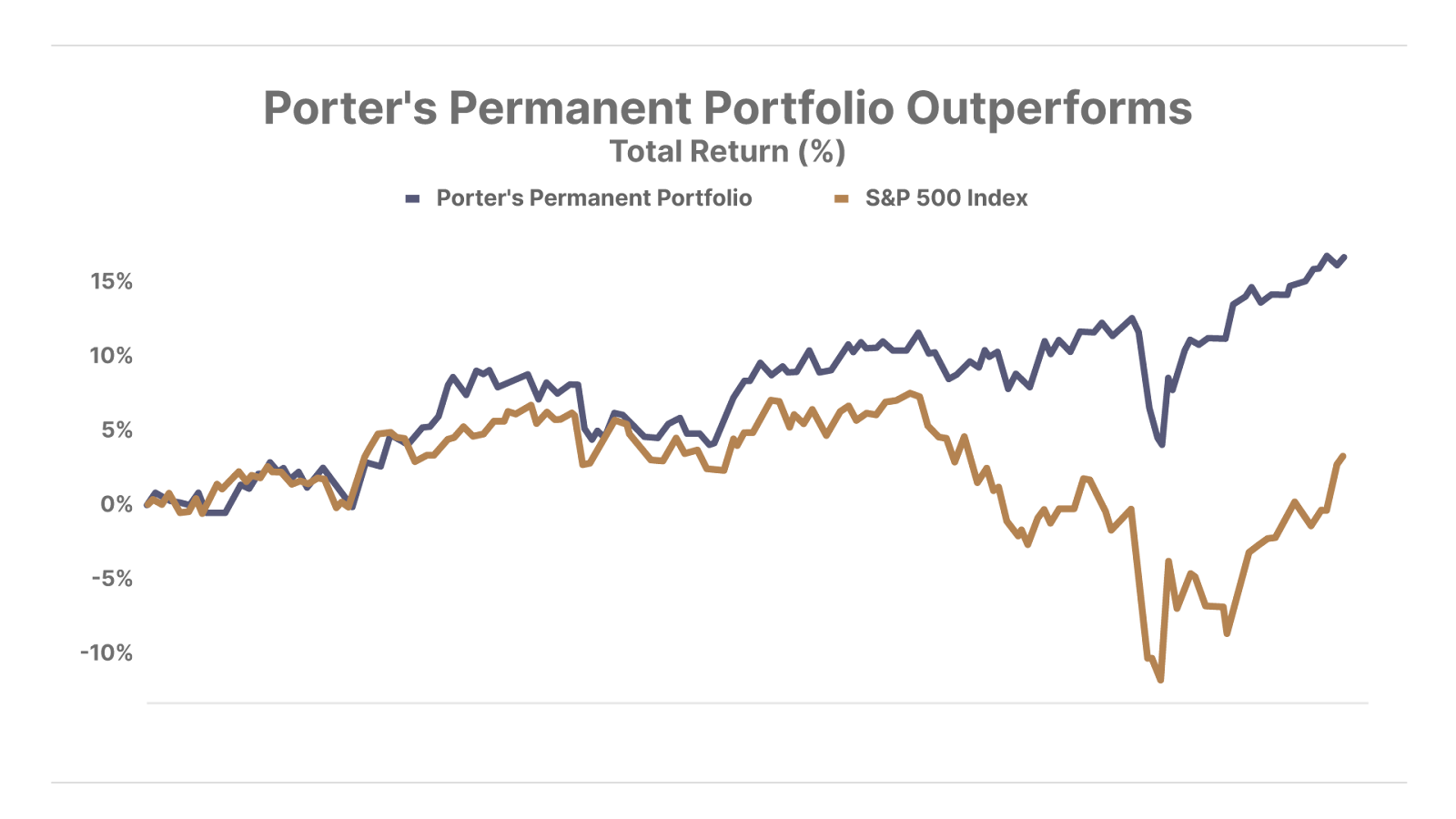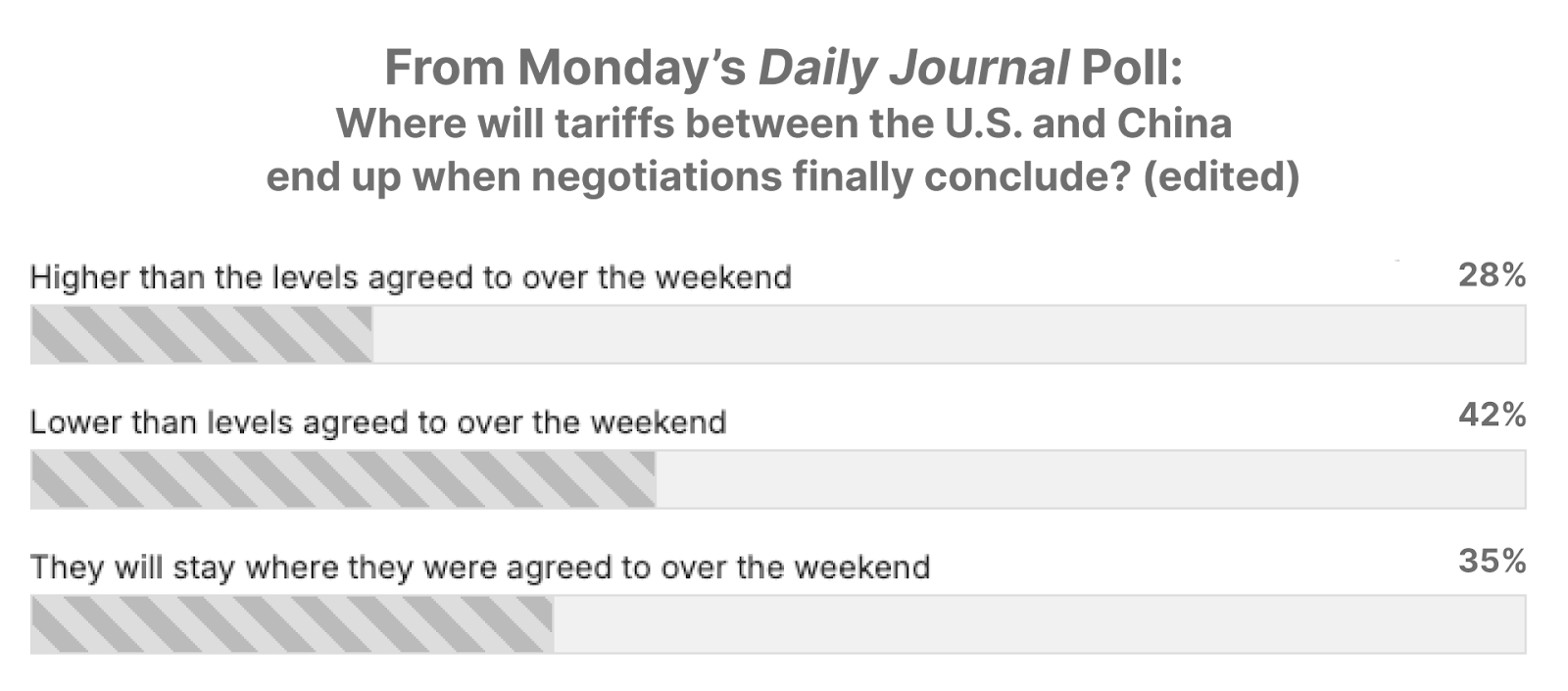Issue #55, Volume #2


I Can Only Help People Who Are Ready To Help Themselves
This is Porter’s Daily Journal, a free e-letter from Porter & Co. that provides unfiltered insights on markets, the economy, and life to help readers become better investors. It includes weekday editions and two weekend editions… and is free to all subscribers.
| How bad will it get before you realize there’s a real problem?… Call options allow you to hold huge blocks of stock… Understanding risk and profiting from volatility… A major insurance company loses 50% of its value… Porter’s Permanent Portfolio outperforms… |
While the recent volatility in the last month or so is a challenge for most investors, it also creates an opportunity. Today, we share a great way to make huge returns in a short period of time – without taking a lot of risk.
To explain how this is done, we’re sharing parts of an investment classic that Porter wrote nearly a decade ago, at Stansberry Research. For years, Porter’s musings in the Friday edition of the Stansberry Digest were essential reading… and this was one of his best.
This excerpt from a December 2015 Digest covers a topic that we have just recently begun to focus on at Porter & Co. It explains a strategy of selling puts for making big profits in distressed equity markets. We will be exploring more such trading strategies and techniques in Porter & Co.’s Trading Club, which we will be launching next month.
Here’s Porter in December 2015…
Please listen to me… There’s nearly $2 trillion worth of stocks whose bonds are trading for less than $0.80 on the dollar already. All of these stocks could go to zero if these bonds default.
Here’s the problem: I know the overwhelming majority of my subscribers won’t short stocks no matter what. As a result, their portfolios aren’t hedged at all to these massive risks.
But… I can’t help that.
I can only help people who are ready to help themselves. You have a great, talented team of honest analysts on your side, who come to work every day and try to figure out how to educate and motivate you. Just follow our lead.
Today, I just want you to learn one thing: The key to making money during distressed markets is to generate large amounts of income.
With distressed bonds, that means getting current yields of 20% or more. With equities, that means selling puts when the CBOE Volatility Index (the “VIX”) is up and premiums are rich.
Having this cash (being liquid) when the market is panicking is the whole trick. No one else will have cash. Everyone else will be panicking and frozen. You will have plenty of money to speculate.
But… which stocks should you sell puts against?
I’ll help you make a list. It’s a group of companies you would be happy to own anyway… but that you don’t actually plan to buy. Instead, on days when the market is falling and volatility spikes, you’re going to sell puts on these stocks. And you’re going to use a Level IV margin account, so you will only have to put up 20% of the capital for these trades.
We’ve picked these stocks because they’re high-quality companies with volatile share prices. And by selling out-of-the-money puts (with strike prices between 5% and 10% below the share price), you can still generate substantial sums of income without any realistic chance of being put (having to buy) the shares.
That might sound difficult or confusing… but it’s as easy as just buying a share of stock if you’re using a good broker. If you’ve never done it before, just try it. Start small.
As you know, this is exactly what we did – very successfully – back in 2009. I showed you how our put-selling campaign during the crisis in 2009 generated a win percentage of 90% and average gains on margin of 54%.
We generated huge amounts of profits simply by selling puts. But there’s something we didn’t do back then that could have made our profits astronomical. We could have recommended using the income we produced to buy call options.
A call option is a contract that you can buy that gives you the right (but not the obligation) to buy 100 shares of stock, at a fixed price (the strike price), for a limited period of time. What call options really do is allow you to hold huge blocks of stock… and buy them if they go way up in price.
What’s so powerful about pairing selling puts with buying calls is that, because of human nature, you can generate more income buying puts than you’ll have to spend to buy calls. In other words, this kind of trading will allow you to make significant amounts of income, while positioning you to make huge gains when (or if) stocks rebound.
How’s that possible? Well, let’s review one of my recommendations from a few years ago…
In July 2014, I recommended opening a trade on discount retailer Dollar General (DG). I had already recommended the stock in Stansberry’s Investment Advisory and we knew the stock was cheap at around $55 per share. We believed there was tremendous upside in the stock, so we recommended the following trade…
“Buy, to open, the Dollar General (DG) January 2016 $65 call for about $4, and sell, to open, the Dollar General (DG) January 2016 $55 put for about $6.60.”
Selling a January 2016 $55 put for around $6.60 and buying a January 2016 $65 call for around $4 created a $2.60 “spread,” which reflects the anomaly at the heart of our strategy. Remember, each option contract represents 100 shares, so investors who followed our advice would have received a $260 net credit for every option pair they traded.
Here’s where the potential of our strategy pays big rewards…
In October 2015, Dollar General shares were trading around $66, so we recommended closing the trade. At the time, the $65 calls were trading for about $5 and the $55 puts were around $0.65. That provided a net credit of $4.35 to close the position. Adding that to the $2.60 net credit we received for opening the trade, our total return was $6.95. That represented a 63% return on margin. For comparison, the S&P 500 returned just 3% (including dividends) over the same period.
This strategy works even better when equity markets are distressed because you can generate much more income with put selling during those periods. But the best part of this strategy might not be readily apparent…
The best part is that you’re going to make money almost every time because of the income you generate from selling puts. Using this premium to buy calls, you don’t have to worry about whether or not the calls expire worthless (as they sometimes will).
I personally can’t tolerate the risk of buying calls with my own money. But using part of your put premiums? Who cares? If it works out, you’ll make a veritable fortune. If it doesn’t, it hardly matters, because you can still book a profit from the premium you received by selling the puts.
In August 2013, we recommended opening a trade in global commodities giant Freeport-McMoRan (FCX). At the time, shares traded around $30.50. We recommended selling the January 2015 $29 put for around $4.25 and buying the January 2015 $37 call for about $1.95. This created a net credit of $2.30. Remember… options contracts control 100 shares, so investors who followed our advice received $230 per option pair traded.
Over the following several months, shares climbed to around $38 per share before heading into a dramatic decline. In October 2014, FCX shares fell to $28. We recommended closing the position to avoid losses. The put was trading for $2.05, while the call had declined to $0.02. It cost $2.03 to close the position. But because we had received a net credit of $2.30 for opening the trade, investors still collected $0.27 per option pair traded, a small 5% return on margin.
In that case, even though the shares had fallen 7% (from around $30.50 to $28), our subscribers still made money. This is what we mean when we say our strategy allows you to enter a position with less risk than buying the shares outright.
So here’s our plan: When volatility spikes, we’ll sell puts on a select group of stocks whose shares we’ve picked because they’re both safe and volatile. Using this income and margin from our brokers (again, you’ll need to have a Level IV margin account), we will find call options on stocks we think are poised to rebound massively from the correction.
If we’re right (and I believe we will be right most of the time), we’ll earn huge profits. And when we’re wrong (and we will be wrong sometimes), we’ll only end up losing money that other investors gave us.
Trump Orders New Wealth Fund For America
Did you catch the news?
Recently, Trump’s Treasury Secretary let slip:
“We’re going to monetize the most valuable asset of the United States.”
What did he mean, exactly?
As you’ll see, Trump could soon unleash a massive new boom in America. One that could dwarf the rise of crypto and NVIDIA, combined.
Former Presidential Advisor Jim Rickards says:
“We’re talking about a state asset that’s so large – if you divide the figure by the number of households in America, it’d be enough to make every family millionaires.
And it will be unleashed starting as early as May 3.”
Three Things To Know Before We Go…
1. Inflation slowed again in April. On Tuesday, the Bureau of Labor statistics reported the consumer price index (“CPI”) rose at a 2.3% annual rate. This was slightly below Wall Street analyst expectations of 2.4%, and the lowest annualized inflation rate since February 2021. As you can see below, CPI has now diverged from the 1970s analog we’ve been tracking. However, with significant tariff uncertainty still ahead, the trend in lower CPI may still not be enough to convince the Federal Reserve to cut rates in the months ahead.

2. America’s largest health insurer implodes. Shares of UnitedHealth Group (UNH) tumbled 18% yesterday, capping off a month-long, 50% losing streak. Shares fell after the company announced the second cut to its earnings outlook this year and the unexpected resignation of its CEO. The primary culprit? Escalating costs from Medicare Advantage (“MA”) claims. However, for bargain hunters, the shares might offer a contrarian opportunity – especially in light of the U.S. government’s recent announcement of a significant 5% boost in payments to MA insurers, like UNH, for 2026.

3. Porter’s Permanent Portfolio outperforms. The financial press is cheering the fact that the S&P 500 and Nasdaq are back to flat on the year after major selloffs in April. But look up… Porter’s Permanent Portfolio has risen 11.9% for the year and 17.2% since inception on September 25, 2024 (versus the S&P and Nasdaq that are up 3.7% and 5.6% since that date). Porter’s approach seems to work when the market’s up and when the market’s down… The balance of assets is exceptionally valuable for investors who want to continue to grow their wealth – but who cannot withstand the volatility of the stock market. Members of The Big Secret On Wall Street can access Porter’s Permanent Portfolio here.

If you’re not already a member, click here to learn about The Big Secret On Wall Street and get full access to Porter’s Permanent Portfolio.
And One More Thing… Survey Results: Where Will China Tariffs Go?
In Monday’s Daily Journal, following two short reports we published on Trump’s tariffs – one, that the U.S. and China have paused their trade war as they continue to negotiate, and the other, revealing that shipping-container traffic between China and Los Angeles has declined by one-third since tariffs were announced – we asked the following survey question: “Where will tariffs between the U.S. and China end up when negotiations finally conclude?”
And survey takers were split in their views: 42% feel tariffs will be lower, 35% feel they will stay the same, and 28% believe tariffs imposed by each country will be higher.

Let me know what you think: [email protected]
Mailbag
In Friday’s Daily Journal, Porter reviewed the performance of Warren Buffett’s Berkshire Hathaway. He wrote:
Most people believe Warren Buffett is the world’s greatest investor… Wrong.
The truth is, Buffett has made a lot of lousy investments in the last 25 years… on a weighted basis, Buffett’s largest take-private investments have lost money.”
We received a flood of emails, with some readers agreeing with Porter’s analysis and some readers critical of it. Here are just a few.
Berkshire and Buffett have made us many millions of dollars. We’re grateful.
But we don’t revere Warren as a god. He has made the mistakes you highlight and others, too. He was a lousy husband and an unavailable father. His preening narcissism can be disgusting.
Your work continues to be so interesting and often profitable for us! Thank you, Porter.
John S.”
I really enjoyed and appreciated that article summarizing Warren Buffett. Right on the money! Perhaps he should have listened more closely to his late vice chair, Charlie Munger, who seemed to lean much more toward just buying good businesses at good prices.
Mark B.”
Your view of Mr. Buffett is refreshing, but a bit mean-spirited. He has, after all, outperformed virtually every major investment group over the past 40 or so years and the average, reasonably intelligent investor would have done well investing in Berkshire Hathaway. And, of course, many people have 20/20 hindsight!
Al A.”
Good investing,
Porter Stansberry
Stevenson, Maryland


Please note: The investments in our “Porter & Co. Top Positions” should not be considered current recommendations. These positions are the best performers across our publications – and the securities listed may (or may not) be above the current buy-up-to price. To learn more, visit the current portfolio page of the relevant service, here. To gain access or to learn more about our current portfolios, call Lance James, our Director of Customer Care, at 888-610-8895 or internationally at +1 443-815-4447.
